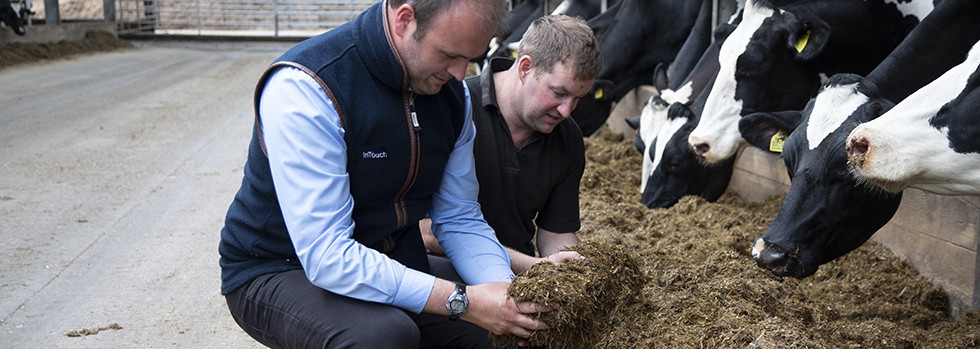
Beyond methane: A life cycle approach to reducing agriculture’s footprint
Much of the conversation today surrounding agriculture’s environmental impact focuses on methane emissions from ruminants, as they account for the largest share of emissions on-farm. However, since total emissions from agriculture arise from both on- and off-farm processes, in order to successfully lower our footprint, we need to look at the full picture. The nature of the problem is far greater than looking at individual greenhouse gases (GHGs) in isolation, and as an industry, we need to recognise that. Owing to the dynamic nature of livestock production systems, solely focusing on reducing emissions in one specific area of a production system — such as fertiliser application — may indirectly cause an increase elsewhere in the system. Strategies to mitigate emissions must consider the balance of emissions across the entire production system. A life cycle analysis approach is one way of doing that – by examining all inputs, processes and outputs of a system, from obtaining raw materials to products leaving the farm gate, we can get a true picture of a farm’s environmental footprint.
A life cycle observation is all about efficiency at system level, and improving that efficiency also means more money for the farmer. The agriculture industry has historically failed to establish a message that reducing emissions is not merely a tick-box exercise, but an opportunity to re-evaluate farm efficiency. Lowering a farm’s footprint may seem burdensome to producers, but there are many positive gains to be achieved along the way. Simply put, emissions are an indicator of waste, and reducing a farm’s footprint goes hand-in-hand with increasing farm efficiency. Having conducted more than 9,000 farm assessments at Alltech E-CO2, we have seen that the most environmentally efficient farms are often the most profitable farms too.

Since the rumen is central to the ruminant life cycle, promoting efficiency through feeding programmes and ingredient selection is critical. Feeding rumen modifiers can directly reduce methane emissions by altering the biochemistry of the rumen and/or selectively inhibiting methane-producing microbes in the rumen. However, some available technologies that claim to reduce enteric methane emissions can have a negative impact on rumen bacteria and, ultimately, animal performance. There are currently too many questions over their real-world efficacy for such technologies to become mainstream. Programmes for reducing emissions and a farm’s carbon footprint via nutrition and feed should focus on the tried and trusted approach of providing feeds that are digestible and that maximise animal production and efficiency.
Yea-Sacc from Alltech is a yeast culture that allows producers to increase productivity in dairy and beef herds while simultaneously lowering emission intensity. Yea-Sacc stimulates fibre-digesting and lactic acid-utilising bacteria, which optimises fibre digestion and nutrient utilisation with less potential energy being wasted to the environment. Backed by almost four decades of research with consistent performance responses, Yea-Sacc has been helping producers to address emissions since before it became acknowledged as a global problem.
Feeding programmes should also consider using sustainable ingredients. For example, soya bean meal carries a high carbon burden — for every 1% reduction in soya content in feed, there is an associated 1.5% reduction in the carbon footprint. Optigen from Alltech is a non-protein nitrogen source that can reduce the global warming potential of a diet by up to 17%. One tonne of Optigen can replace eight tonnes of soya and also allows for more homegrown forages — which carry a low-carbon weight — to be utilised in the diet. Ultimately a sustainable system is based on a foundation of good forage management. Speaking at Alltech’s European Technical Summit in Ireland earlier this year, Carolyn Opio from the FAO highlighted how ruminants have a low overall efficiency of nitrogen utilisation; between 70% and 95% of the nitrogen in diets is excreted in dung and urine. Accordingly, increasing the efficiency of rumen nitrogen capture, which can be achieved with Optigen, leads to less wasted nitrogen and greater benefit to producers and the environment.

It has been proven time and time again that higher-producing animals are more efficient and have a lower carbon footprint than their lower-producing counterparts in the same management system. Increasing animal production through nutrition management and genetics will decrease maintenance energy requirements, thereby increasing feed efficiency. This shift will resonate across the life cycle and up the supply chain, reducing the carbon footprint per unit of milk. For example, a 100-kilogram increase in milk production per cow per lactation will result in a 3% to 7% decrease in emission intensity. Studies have also shown that top genetic merit cows in a typical forage-based system can have up to 9% lower emissions than the average British dairy herd. Dropping the age at first calving from 27 months to 24 months could also reduce emission intensity by 3%.
Aside from the animal, there are many more opportunities to improve efficiencies in production systems. Some practical solutions include improving manure management, forage management, anaerobic digestion, precision slurry utilisation and purchasing less nitrogen. Adopting a strategy that considers the entire production system will lead to accumulative gains across multiple areas and result in a greater reduction in carbon footprint. These will not only benefit the producer but will again resonate over the life cycle and the supply chain.
To successfully reduce agriculture’s environmental impact, the industry must look beyond the hyperbole and singular aspects. Instead of focussing on improving one area (or one gas) by 100%, we — meaning all stakeholders in the supply chain — should ask ourselves, can we improve 100 things by 1%? Producers have already made significant progress in lowering their footprint without compromising productivity, and we must continue to help them to go even further. This should not be seen as a burden to the producer or industry, but an opportunity to improve our production systems. Ultimately our message should be a common one: A more efficient production system is a more sustainable system and more profitable farm.
Dr. Stephen Ross, Senior Sustainability Specialist, Alltech E-CO2